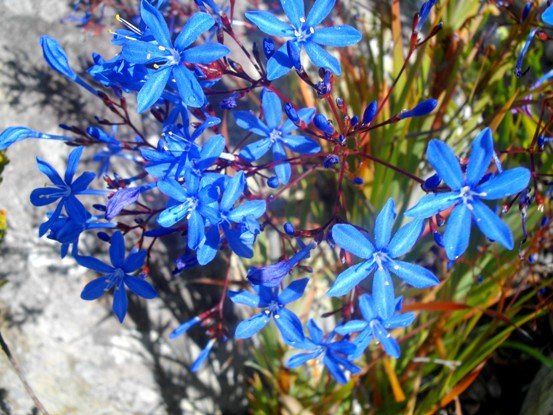Nivenia stokoei flower cluster

Author: Ivan Lätti
Photographer: Thabo Maphisa
The star-like flowers of Nivenia stokoei, in Afrikaans the blousterretjie (blue starlet), are produced in two formats, viz. long stamens with short styles and vice versa, short stamens with long styles.
The phenomenon is called heterostyly, an evolutionary adaptation to avoid self-pollination, i.e. pollen from the anthers landing on the stigma of their own flower, ending up fertilising the female cells in its own flowers ovary. What then happens is that pollen from short-stamened flowers will be carried by insects on their bodies in such a way that it will be deposited on short-styled flowers growing somewhere nearby and vice versa. (It is thought that the two flower forms grow on different plants, but this bears confirmation.)
Not all plant species “take such trouble” to avoid self-pollination, but those that do employ almost endless variations in technique, shaped by natural selection in the thousands of years that botanists weren’t looking. In this plant long stamens with small yellow anthers can be seen, the styles being short (Information from a Kirstenbosch signboard).

